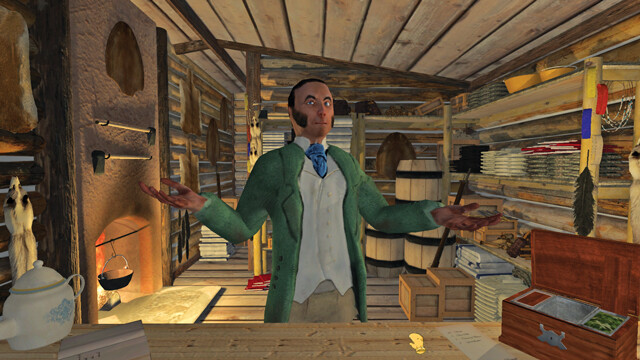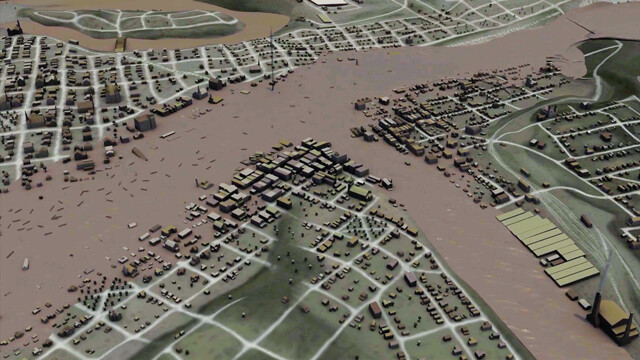Gaming History
Chippewa Valley Museum collaborates with Stout program for an interactive experience

The wealth of resources the Chippewa Valley’s universities provide to the area is evident in some ways – speakers and concerts, employment, economic impacts – but sometimes it’s easy to forget. When the community and university come together, though, some pretty great things can happen.
The most recent example of this is a new collaboration between a UW-Stout class and the Chippewa Valley Museum. A number of students – under professor Dave Beck – in the 3D Animation Department have created two immersive, digital projects for the museum’s upcoming exhibit Changing Currents: Reinventing The Chippewa Valley: a recreation of the 1884 flood and a choose-your-own-adventure style game that takes place in a fur trade post in the late 1700s. Both projects are interactive and let visitors explore the history of the Chippewa Valley in a new, unique way.
“Visitors expect to see more technology everywhere. They want to engage more and envision what it looked like beyond a static photograph.” – Carrie Ronnander, Chippewa Valley Museum, on interactive exhibits
“It allows visitors to use their imaginations more,” curator Carrie Ronnander said. “Visitors expect to see more technology everywhere. They want to engage more and envision what it looked like beyond a static photograph.”
Ronnander said the collaboration came up almost accidentally – Professor Beck had approached the museum about an entirely different matter and the idea of collaborating came up. The students spent much of the semester – about two months in all – working with the museum staff to create their exhibits. The museum would research images to model and write the script for the game, then pass the work on to the class at Stout to build. The project would then bounce back and forth, with the two groups Skyping and meeting to get every detail perfect.
The benefits of the project reach beyond the museum, though. Beck said the experience students get working in a real world environment is invaluable.
“It was huge,” Beck said. “As you can imagine, normally with a project like this I assign it and I am the client. But when we’ve brought in an outside client, it multiplies the importance and outcomes and experience tenfold for the students. It also multiplies the product’s quality.”

This certainly isn’t the only artistic collaboration between the universities and community. In 2012, a team of UW-Eau Claire students designed three new hybrid buses for Eau Claire Transit, each depicting a season of Wisconsin weather. Beck and Ronnander both said they don’t intend on it being the last. Ronnander said the positive experience of these projects has opened up the museum’s imagination of other possibilities both with new exhibits and exhibits that have been in the museum for years.
“We’ve had a great experience so far,” Beck said. “It’s a great opportunity for our students, and it lets the museum see what they can do to innovate on a more affordable scale.”
Seems like a win-win to me.
Changing Currents: Reinventing the Chippewa Valley opens at the Chippewa Valley Museum July 4 and both interactive projects will be available to visitors then.






















